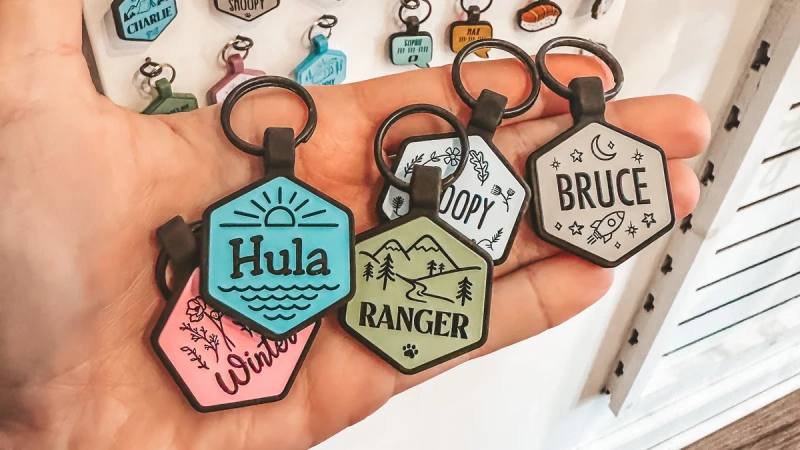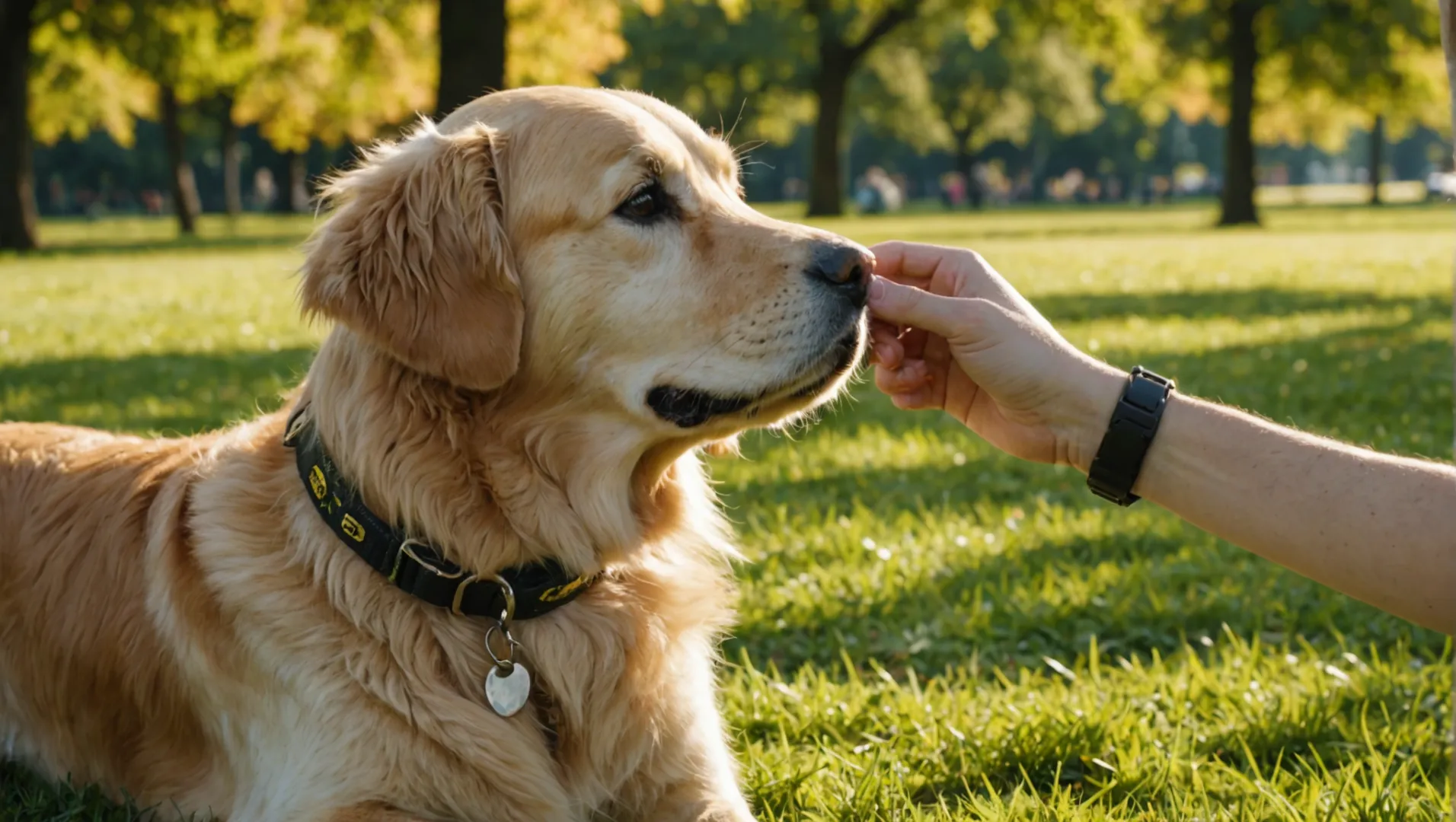
Adjusting your dog’s collar is more than just a routine task; it’s an essential part of caring for your furry friend. A well-fitted collar ensures their safety, comfort, and your peace of mind.
To adjust a dog collar properly, measure your dog’s neck with a soft tape measure, select the right size, and use the two-finger rule to ensure the collar is snug yet comfortable.
While adjusting a collar seems straightforward, there are subtleties based on the collar type and your dog’s specific needs. Let’s explore these nuances together!
The two-finger rule ensures a dog's collar fits properly.True
The two-finger rule helps ensure the collar is snug yet comfortable.
What Are the Different Types of Dog Collars and How Do They Affect Fit?
Choosing the right collar is crucial for your dog’s comfort and security. Each type of collar offers unique benefits, impacting how it fits your pet.
Dog collars vary in design, including flat, martingale, and choke chain types, each affecting fit differently. Choosing the right one involves considering your dog’s size, behavior, and comfort needs.
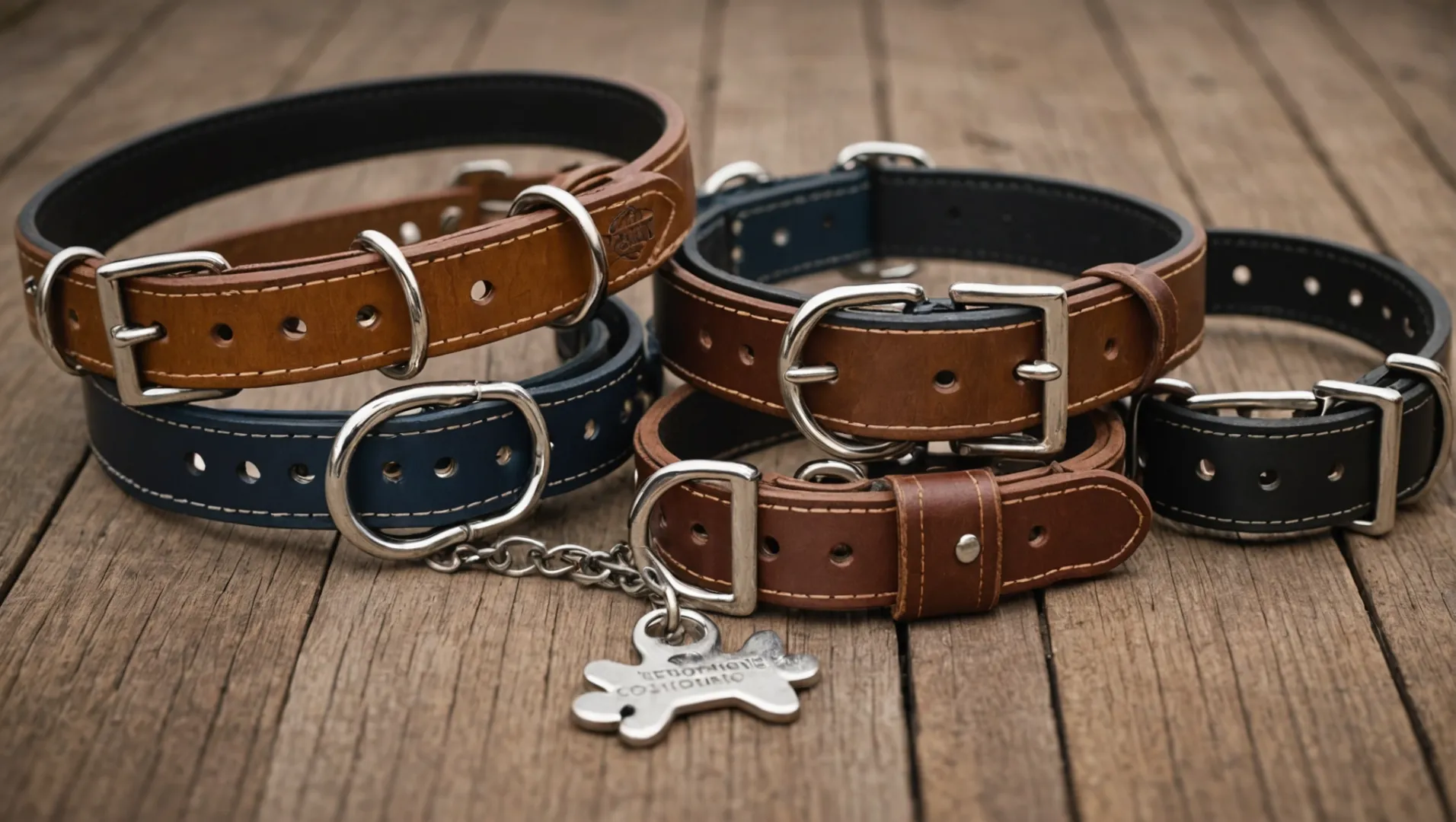
Flat Collars
Flat collars are the most common and versatile type of dog collar. They feature a simple buckle or snap closure and can be adjusted easily to fit your dog’s neck comfortably.
- Benefits: Ideal for everyday wear, easy to put on and take off.
- Considerations: Make sure it fits snugly using the two-finger rule to prevent slipping.
Martingale Collars
Martingale collars provide more control without choking your dog. They are designed with a limited-slip feature that tightens slightly when the dog pulls.
- Benefits: Great for dogs with narrower heads or those prone to slipping out of traditional collars.
- Considerations: Adjust the control loop to avoid excessive tightening, ensuring it’s secure yet comfortable.
Choke Chain Collars
Choke chains are typically used for training purposes and tighten when pulled. However, they require careful use to avoid injury.
- Benefits: Effective for training certain behaviors.
- Considerations: Should only be used by experienced handlers; improper use can harm your dog.
Prong or Pinch Collars
These collars apply pressure evenly around the neck when the dog pulls. They’re designed to prevent pulling by providing a gentle pinch.
- Benefits: Useful for strong dogs that pull excessively.
- Considerations: Must be fitted correctly to prevent discomfort or injury; not suitable for all dogs.
| Collar Type | Benefits | Considerations |
|---|---|---|
| Flat | Everyday wear, easy use | Ensure snug fit |
| Martingale | Control without choking | Adjust control loop properly |
| Choke Chain | Effective for training | Use carefully to avoid injury |
| Prong/Pinch | Prevents pulling in strong dogs | Requires proper fitting |
Factors Influencing Fit
When selecting a collar, consider the following factors:
- Size and Breed: Larger breeds may require stronger materials, while smaller dogs benefit from lightweight options.
- Activity Level: Active dogs may need collars with added durability or features like reflective strips.
- Behavior: Dogs prone to pulling might benefit from martingale collars1 or prong collars.
- Age and Growth: Puppies require adjustable collars that can accommodate growth stages.
Each type of collar serves a unique purpose and affects fit differently. Understanding these variations can help you choose the best option for your dog’s needs.
Flat collars are ideal for everyday wear.True
Flat collars are easy to use and suitable for daily use.
Choke chains are safe for all dog owners to use.False
Choke chains can cause harm if not used properly by experienced handlers.
How Can You Measure Your Dog’s Neck Accurately for the Perfect Collar?
Finding the perfect collar for your dog begins with accurate neck measurement. This ensures comfort and safety.
To measure your dog’s neck accurately, use a soft tape measure around the base of the neck, allowing for two fingers’ space for comfort.
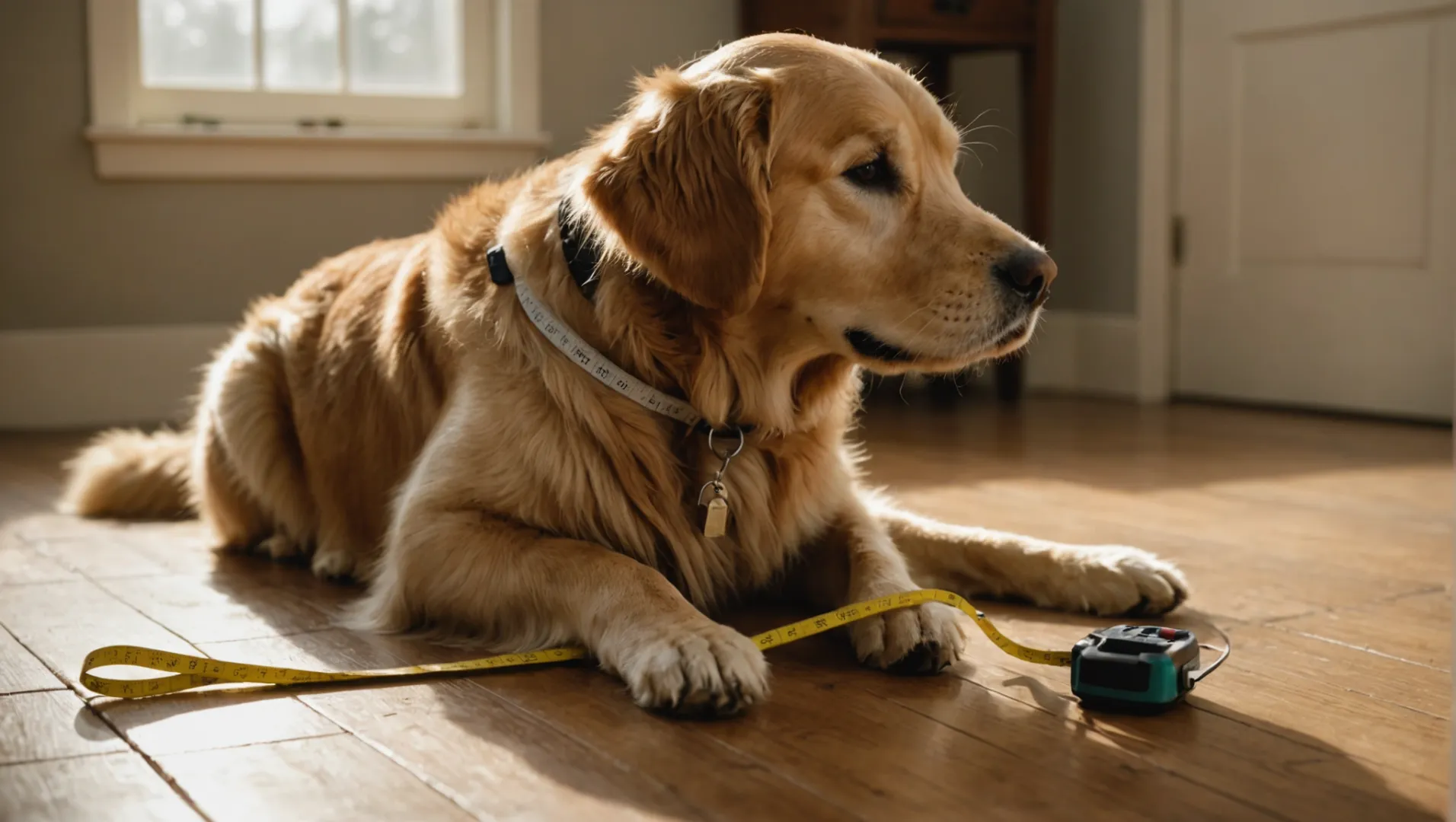
Why Accurate Measurement Matters
Accurately measuring your dog’s neck is crucial because a well-fitted collar is essential for their comfort and safety. A collar that is too tight can cause discomfort or injury, while a loose one might slip off during walks.
Tools You Need
- Soft Tape Measure: A flexible tape measure will contour around your dog’s neck, giving a precise measurement.
- String and Ruler: If you lack a tape measure, use a string to measure the neck, then lay it against a ruler to determine the length.
Step-by-Step Measuring Guide
- Position Your Dog: Have your dog stand still in a comfortable position.
- Locate the Base of the Neck: This is where the collar will naturally sit.
- Measure: Wrap the tape measure or string around your dog’s neck.
- Check for Comfort: Insert two fingers between the measuring tool and the neck. This space ensures the collar won’t be too tight.
Consider Your Dog’s Growth
If your dog is still growing, account for future size increases by adding a little extra length to your measurement. For growing puppies, check their collar fit frequently and adjust as needed.
Different Types of Collars
Each type of dog collar may require slight adjustments in measurement:
- Nylon Collars: Flexible and easy to adjust by sliding the tri-glide.
- Buckle Collars: Adjust using pre-punched holes; you might need to add holes if needed.
- Martingale Collars: Include a control loop; ensure it tightens without choking.
Common Mistakes to Avoid
- Guessing Measurements: Always use a measuring tool for accuracy.
- Ignoring Growth: Regularly adjust collars for growing dogs.
- Disregarding Comfort Checks: Regularly test fit with the two-finger rule to prevent discomfort.
By following these steps and regularly checking your dog’s collar, you can ensure their comfort and safety during daily activities.
Using a string is an accurate way to measure a dog's neck.True
A string can be used, then measured against a ruler for accuracy.
Ignoring the two-finger rule ensures a snug collar fit.False
The two-finger rule prevents the collar from being too tight.
Why Is Regular Collar Maintenance Important for Your Dog’s Safety?
Maintaining your dog’s collar isn’t just about appearance—it’s crucial for safety. A well-maintained collar prevents escape, discomfort, and potential injuries.
Regular collar maintenance is essential to ensure your dog’s collar fits properly, preventing discomfort and potential injury while enhancing safety during walks and everyday activities.
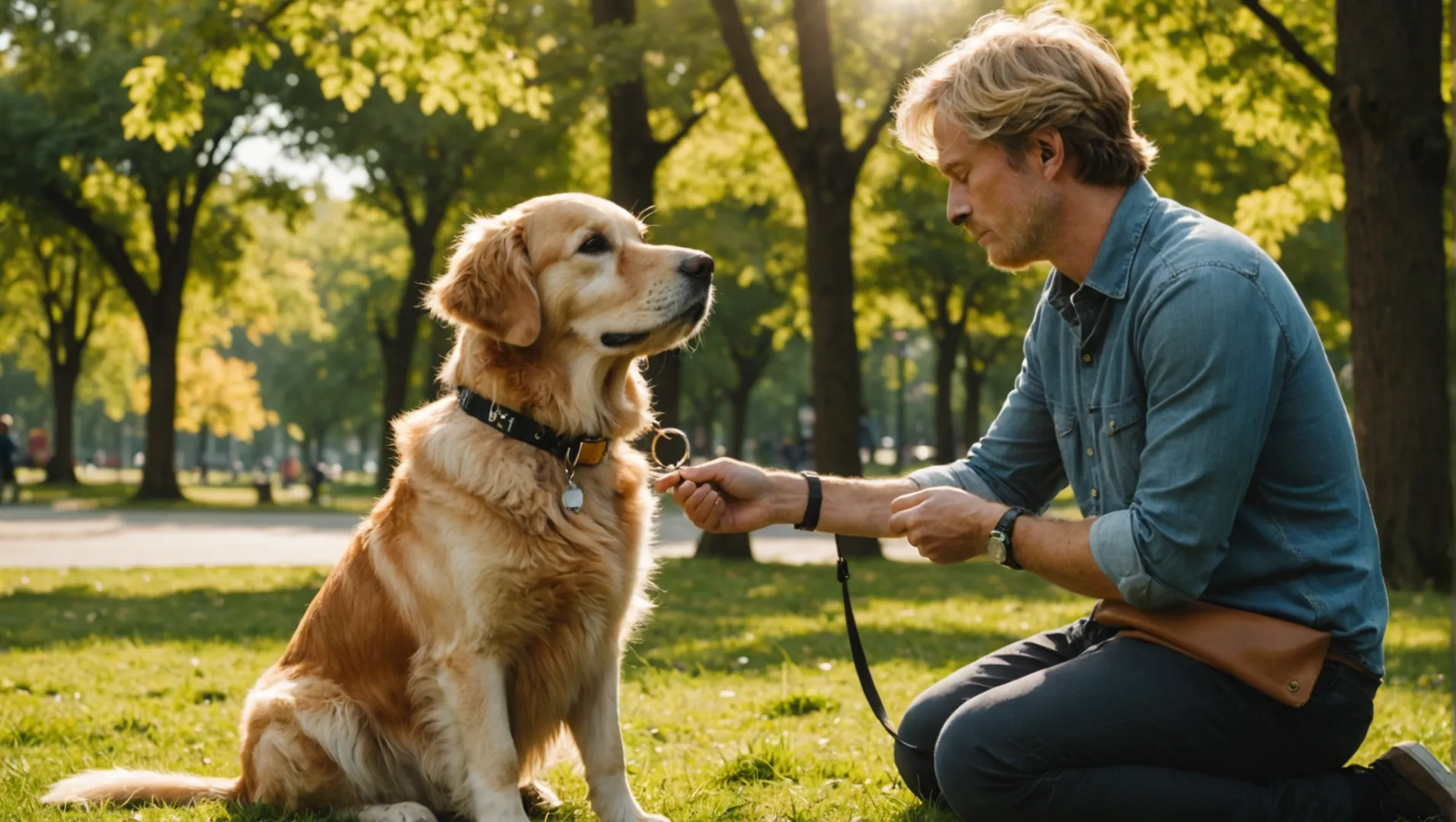
Ensuring Proper Fit for Safety
A poorly fitted collar can be a safety hazard. If it’s too loose, your dog might slip out, leading to potential escape or injury. Conversely, a tight collar can cause discomfort or even restrict breathing. Regularly checking and adjusting the collar ensures it fits perfectly and comfortably. This is particularly crucial for growing puppies or dogs that experience weight fluctuations.
Preventing Skin Irritation
Over time, collars can cause wear and tear on your dog’s skin if not properly maintained. Regular checks can prevent issues like chafing or sores from developing. Inspect the collar for rough edges, dirt build-up, or worn-out materials that might cause irritation. Using soft materials2 and ensuring cleanliness can greatly improve your dog’s comfort.
Enhancing Visibility and Identification
Many collars come with reflective elements or personalized tags that are essential for safety, especially during night walks. Regular maintenance ensures these features remain visible and effective. Verify that identification tags are securely attached and readable; this is vital should your dog become lost. Learn more about choosing reflective collars3.
Adapting to Seasonal Changes
Different seasons may require different collar adjustments or types. For instance, a heavier coat in winter might mean loosening the collar, while summer might require a lighter, more breathable option. Regular checks allow you to adjust for these changes accordingly.
Checking for Damage or Wear
Collars can become frayed or damaged over time, especially if your dog is active or enjoys rough play. Regular inspection helps catch wear early, preventing breaks that could lead to escapes. Explore tips on detecting collar wear4 to keep your pet safe.
Understanding the Importance of the Right Materials
Different materials offer different benefits and drawbacks. Nylon collars are durable but might retain odors, while leather offers longevity but requires more upkeep. Knowing the pros and cons of each material can inform better maintenance practices.
| Material | Pros | Cons |
|---|---|---|
| Nylon | Durable, affordable | Retains odor |
| Leather | Long-lasting, stylish | Requires regular cleaning |
| Reflective | Enhances visibility | Can wear quickly |
Ensuring regular maintenance of your dog’s collar not only promotes safety but also extends the collar’s lifespan, providing peace of mind as you and your furry friend enjoy daily adventures.
A loose collar can lead to a dog escaping.True
A loose collar allows dogs to slip out easily, risking escape.
Leather collars are maintenance-free.False
Leather collars require regular cleaning and care for longevity.
What Common Mistakes Should You Avoid When Adjusting a Dog Collar?
Adjusting a dog collar seems simple, yet many pet owners unknowingly make mistakes that can affect their pet’s well-being. Avoiding these errors is key to ensuring your dog’s comfort and safety.
Avoid common mistakes like choosing the wrong collar size, neglecting regular adjustments, and not considering your dog’s growth or weight changes.
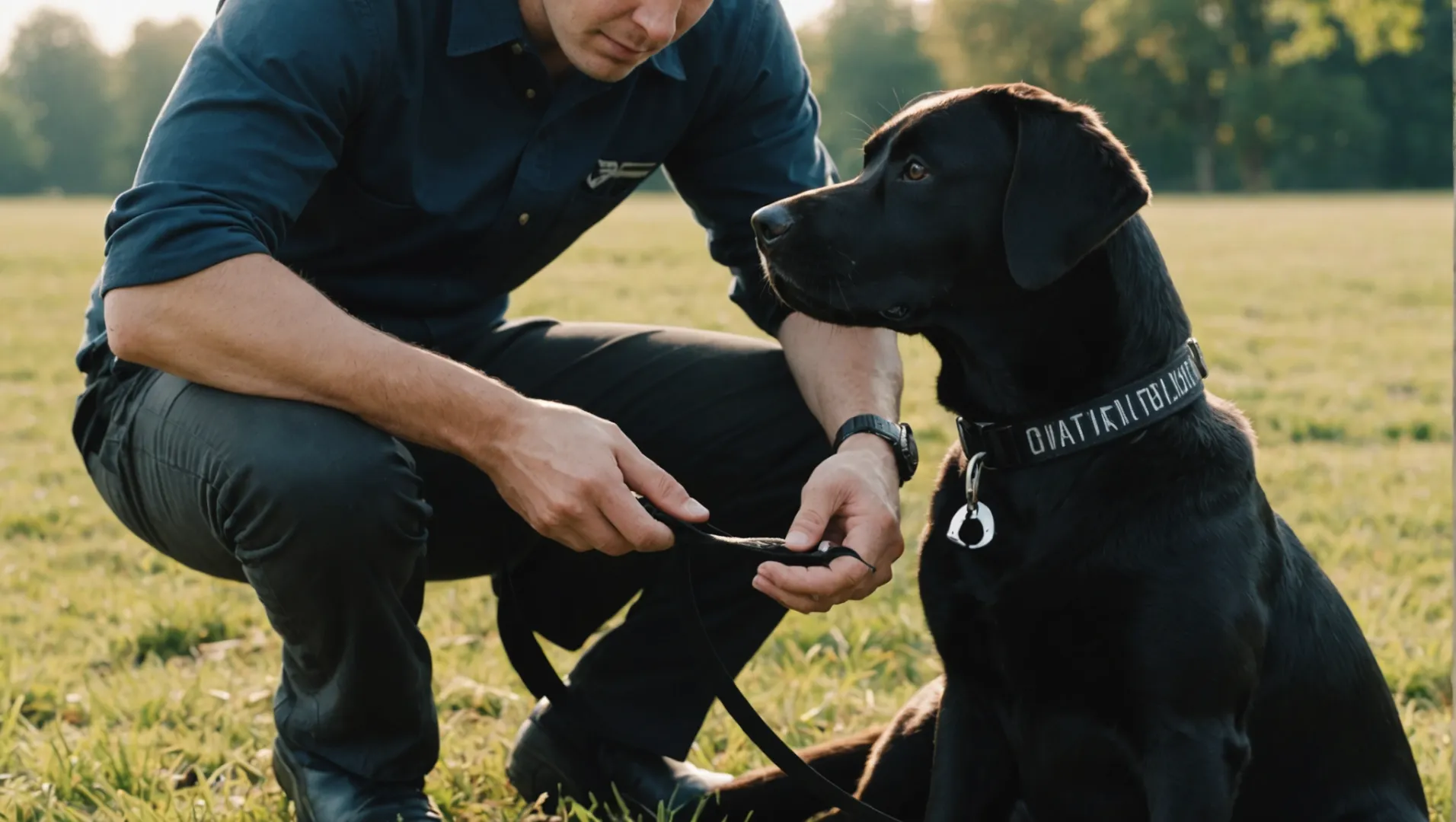
Selecting the Incorrect Collar Size
One of the most frequent mistakes is choosing a collar that doesn’t fit properly. A collar that is too tight can cause discomfort or even injury, while one that is too loose might slip off. Always measure your dog’s neck accurately with a soft tape measure. A good rule of thumb is the two-finger rule: you should be able to fit two fingers comfortably between the collar and your dog’s neck.
Neglecting Regular Adjustments
Dogs grow and their weight can fluctuate, especially if they’re still puppies. It’s crucial to regularly check and adjust the collar to accommodate these changes. Failing to do so can lead to a collar that’s either too tight or too loose, both of which can be problematic. Consider setting a reminder for regular collar checks to ensure it’s always a perfect fit.
Overlooking Collar Material and Type
Different materials and types of collars require different adjustment techniques. For instance, nylon collars5 are adjustable by moving the tri-glide, while leather collars need specific holes for adjustments. Martingale collars have a unique loop system that needs careful sizing to avoid choking your dog. Understanding these differences is essential for proper adjustment.
Ignoring Signs of Discomfort
Dogs may exhibit signs of discomfort if their collar isn’t fitting well. If your dog scratches frequently at the collar, exhibits unusual behavior, or appears reluctant during walks, it’s worth examining the collar fit. Regular observation of your dog’s behavior can prevent prolonged discomfort or health issues.
Not Considering Additional Collar Features
Collars with reflective elements or personalization need extra consideration during adjustments. Ensure that these features remain visible and correctly positioned after adjusting the collar. Additionally, avoid placing heavy tags that may weigh down the collar excessively.
By paying attention to these common mistakes, you can ensure that your dog’s collar is always comfortable and safe for everyday use.
A collar too tight can cause dog discomfort or injury.True
A tight collar restricts movement and circulation, causing harm.
Ignoring collar material doesn't affect adjustment technique.False
Different materials require specific techniques for proper adjustment.
Conclusion
By regularly checking your dog’s collar fit, you can ensure their comfort and safety. A little attention goes a long way in keeping them happy on every adventure!
-
Learn how martingale collars provide control without choking.: Reasons to use a martingale collar · 1. The martingale collar makes it difficult for a dog to slip free. · 2. Martingale collars are helpful for training. · 3. ↩
-
Discover comfortable materials that minimize skin irritation for your pet.: Water-Resistant: Silicone collars repel water, preventing moisture buildup and skin irritation. Biothane. Biothane is a coated webbing material that is durable, … ↩
-
Find collars that enhance visibility for safer evening strolls.: 3M Reflective Dog. 31. $18.99. Why do you need a REFLECTIVE product? Reflective pet products increase visibility during nighttime walks and help prevent … ↩
-
Learn signs of damage in collars to prevent unexpected breakage.: 1. The collar isn’t fitting right · 2. There are signs of wear and tear · 3. The tags are hard to read · 4. The collar doesn’t meeting your training needs · 5. It … ↩
-
Learn specific adjustment techniques for versatile nylon dog collars.: AKC Reunite reflective and personalized dog collars feature 3M Scotchlite reflective stitching … ↩


